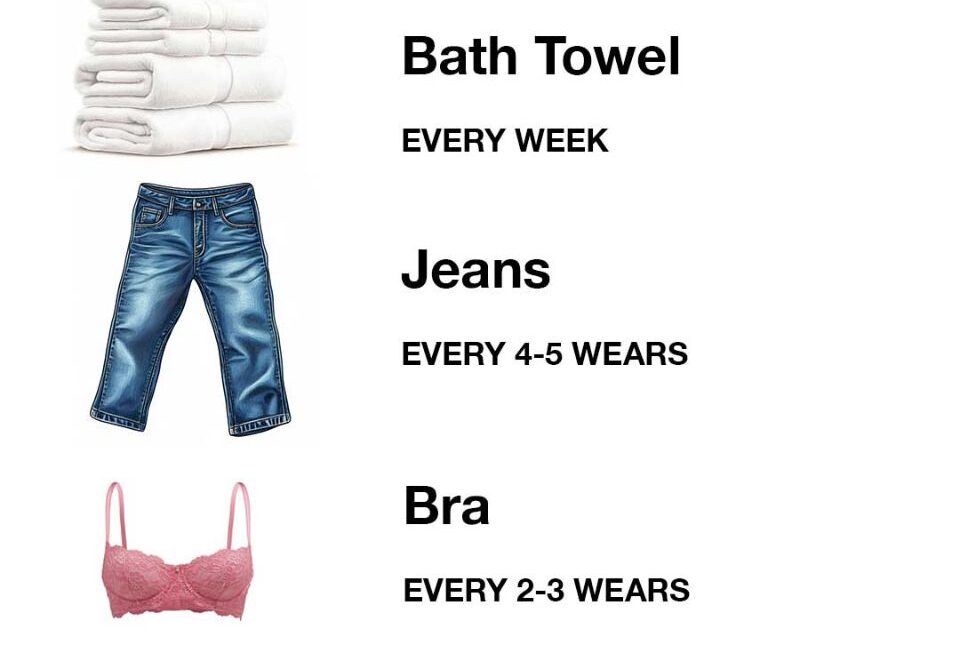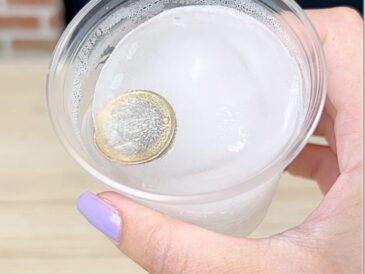Maintaining a clean and healthy home requires more than just a quick surface wipe or a once-in-a-while deep clean. It involves setting up a consistent cleaning schedule for various items in your home that often get overlooked. Proper cleaning habits can help preserve the longevity of your belongings and create a more hygienic living environment. In this article, we’ll explore the top 20 household items and the optimal cleaning schedules for each, based on expert advice. Following these guidelines will not only improve cleanliness but also help avoid unnecessary wear and tear on your possessions.
1. Bath Towels: Once a Week
Why? Bath towels accumulate moisture, skin cells, and oils, providing an ideal environment for bacteria and mold growth. If you leave your towels damp after a shower, they can become a breeding ground for germs.
Cleaning Tips: Wash bath towels once a week in hot water to kill bacteria. If your home is humid or you have a large family, you may want to wash towels more frequently. Make sure they dry completely after each use to prevent mold and mildew.
2. Purses: Every Week
Why? Purses are exposed to many different surfaces—floors, counters, and public places. As a result, they can pick up dirt, dust, and germs, making them a potential source of contamination.
Cleaning Tips: Wipe down your purse once a week with a disinfectant wipe, paying attention to the interior and the handles. If it’s made of fabric or leather, consider a more thorough cleaning every few months, using appropriate cleaners for each material.
3. Bras: Every 2-3 Wears
Why? Bras come in direct contact with skin, absorbing sweat, oils, and odors. Over-washing them can weaken their elasticity, while under-washing can lead to bacterial buildup.
Cleaning Tips: Wash your bras every 2-3 wears to keep them fresh and prevent bacteria buildup. Use a gentle detergent and air dry the bras to maintain their shape and elasticity.
4. Jeans: Every 4-5 Wears
Why? Jeans are made from durable fabric and don’t need frequent washing unless they’re visibly dirty or have absorbed unpleasant odors.
Cleaning Tips: Wash your jeans every 4-5 wears in cold water to preserve their color and fit. Turn them inside out to minimize fading and avoid using a dryer to preserve the fabric.
5. Pillows: Every 3-6 Months
Why? Pillows accumulate dust, sweat, and allergens over time, potentially causing health issues like asthma or skin irritations.
Cleaning Tips: Wash your pillows every 3-6 months in hot water to eliminate dust mites and other allergens. Check the care label for specific instructions, as some pillows require dry cleaning.
6. Bed Sheets: Every Week
Why? Bed sheets collect sweat, skin cells, and dust mites, which can cause allergic reactions and discomfort if not cleaned regularly.
Cleaning Tips: Wash your bed sheets once a week in hot water to kill bacteria and eliminate allergens. Change pillowcases more frequently if you have acne-prone skin to prevent oil buildup.
7. Kitchen Sponges: Every Week
Why? Kitchen sponges harbor bacteria, food particles, and grease. They’re one of the dirtiest items in the house due to their constant exposure to germs.
Cleaning Tips: Replace sponges every week, or sanitize them daily by microwaving them for one minute or soaking them in a bleach solution. You can also run them through the dishwasher to sanitize.
8. Toothbrushes: Every 3-4 Months
Why? Toothbrushes can accumulate bacteria and wear out over time, reducing their effectiveness and potentially causing oral health issues.
Cleaning Tips: Replace your toothbrush every 3-4 months or sooner if the bristles start to fray. Regularly rinse your toothbrush with hot water and store it upright to let it dry between uses.
9. Carpets: Every 6-12 Months
Why? Carpets trap dust, dirt, allergens, and pet dander, which can affect indoor air quality and trigger allergies or asthma.
Cleaning Tips: Hire a professional to clean your carpets every 6-12 months. Alternatively, use a carpet cleaner at home to remove embedded dirt. Regular vacuuming is also essential.
10. Curtains: Every 3-6 Months
Why? Curtains collect dust, pet dander, and allergens, affecting indoor air quality.
Cleaning Tips: Wash or dry clean your curtains every 3-6 months to remove dirt and allergens. Be sure to follow the care label for fabric-specific cleaning methods.
11. Refrigerator: Every 3-4 Months
Why? Refrigerators are prone to spills, mold, and bacteria, which can contaminate food and make your fridge less efficient.
Cleaning Tips: Empty your refrigerator and clean the shelves and drawers every 3-4 months. Use a mild detergent and warm water, and don’t forget to clean the door seals to maintain efficiency.
12. Oven: Every 3-6 Months
Why? Ovens accumulate grease, food splatters, and burnt residue, which can affect cooking performance and create unpleasant odors.
Cleaning Tips: Clean your oven every 3-6 months, or more frequently if you cook a lot. Use a non-toxic oven cleaner or a mixture of baking soda and vinegar for natural cleaning.
13. Windows: Every 6 Months
Why? Dirt and grime can accumulate on windows, obstructing your view and reducing the amount of natural light that enters your home.
Cleaning Tips: Clean your windows twice a year, or more often if they’re exposed to a lot of dirt or pollution. Use a streak-free window cleaner and a microfiber cloth for optimal results.
14. Shower Curtains: Every Month
Why? Shower curtains can develop mold and mildew from constant exposure to water and moisture.
Cleaning Tips: Wash your shower curtains once a month with hot water and vinegar to prevent mold growth. Consider using a mildew-resistant liner for added protection.
15. Mattresses: Every 6 Months
Why? Mattresses trap dust mites, sweat, and allergens, which can affect your health and sleep quality.
Cleaning Tips: Vacuum your mattress every 6 months and rotate it to prevent uneven wear. Consider using a mattress protector to keep it clean longer.
16. Light Fixtures: Every 3-6 Months
Why? Dust and insects accumulate on light fixtures, reducing their brightness and creating potential allergens.
Cleaning Tips: Clean your light fixtures every 3-6 months to maintain proper lighting quality and minimize dust. Use a damp cloth or microfiber duster to clean gently.
17. Remote Controls: Every Week
Why? Remote controls are frequently touched by multiple people, making them a hotspot for germs and bacteria.
Cleaning Tips: Wipe down remote controls with a disinfectant wipe every week to kill germs and bacteria.
18. Computer Keyboards: Every Week
Why? Keyboards accumulate dust, food crumbs, and bacteria from frequent contact.
Cleaning Tips: Clean your keyboard weekly with compressed air and disinfectant wipes to remove dirt and germs.
19. Cell Phones: Every Day
Why? Cell phones are constantly handled and can harbor large amounts of bacteria due to frequent contact with hands and surfaces.
Cleaning Tips: Wipe down your cell phone daily with a microfiber cloth and disinfectant wipe to reduce germs and bacteria.
20. Makeup Brushes: Every Week
Why? Makeup brushes accumulate oils, bacteria, and product residue, which can cause skin irritations and breakouts.
Cleaning Tips: Wash your makeup brushes every week with a gentle cleanser to maintain skin health and prolong the life of the brushes.
Conclusion: Maintaining a Clean and Healthy Environment
Cleaning your home regularly is crucial to ensuring a healthy living environment. By following the optimal cleaning schedules for each of these 20 household items, you can reduce bacteria buildup, improve air quality, and extend the lifespan of your belongings. Establishing a consistent cleaning routine based on these guidelines will help you maintain a comfortable and inviting home while promoting your overall well-being. By investing a little time each week, you’ll create a space that’s not only clean but also healthier for you and your family.




